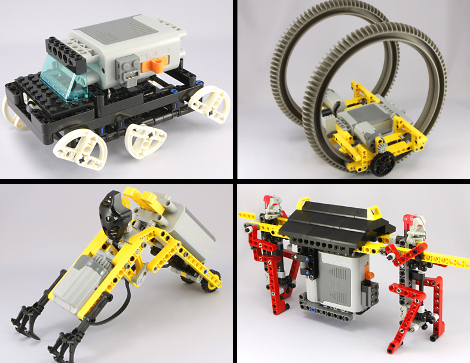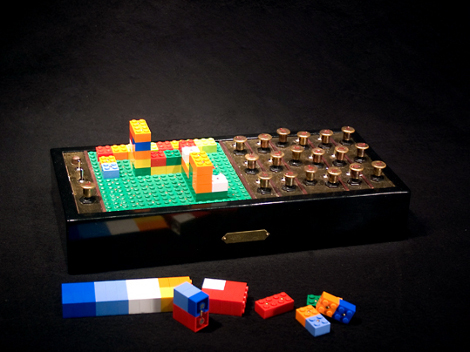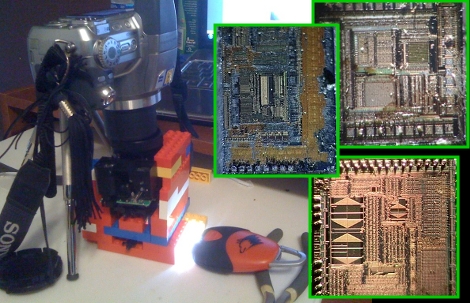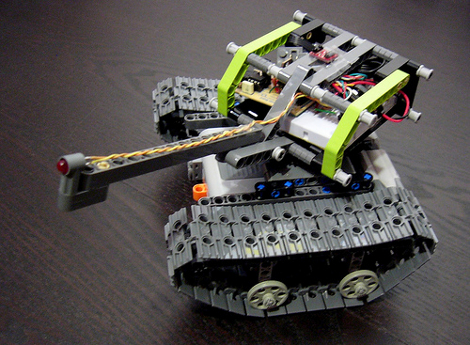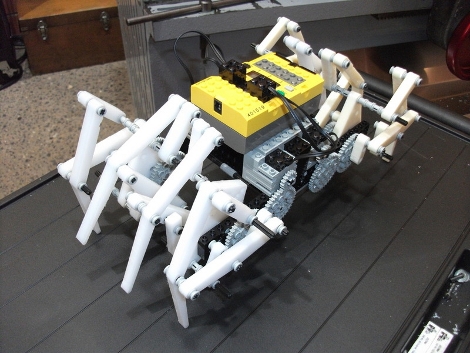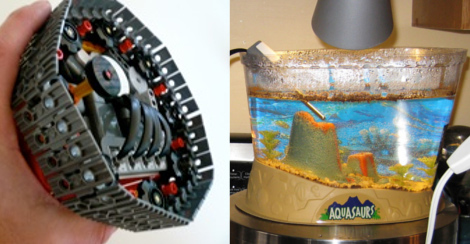
Here’s a double-dose of Lego NXT goodness; a robotic tank and an automatic aquarium heater.
The image to the left is a robotic tank powered by the popular Lego Mindstorms NXT kit. The brains rest inside of a tube, including the controller brick, ultrasonic range finder, a gyroscope, and a compass. Two sets of treads surround each edge of the tube making us wonder which end is up? We’ve embedded a video of this beast after the break. You’ll see that the tank is incredibly agile in this configuration.
To the right is an aquarium heater. [Dave’s] kid were growing some tiny water dwellers which we’ve always know as Sea-Monkeys. The problem is that the tank needs to be between 72-80 degrees Fahrenheit for the little shrimp to thrive. He dug out his NXT controller and paired it up with the Lego temperature sensor and a dSwitch relay. This setup monitors the Aquarium for temperatures between 72-78 degrees and switches a lamp on an off to regulate the temperature. This keeps his kids and the stagnant pool happy.
Now that we’ve whet your appetite for NXT check out the wiimote operated NXT Segway and the NXT Sudoku solver.
Continue reading “NXT Hacks: Tanks And Heaters” →
